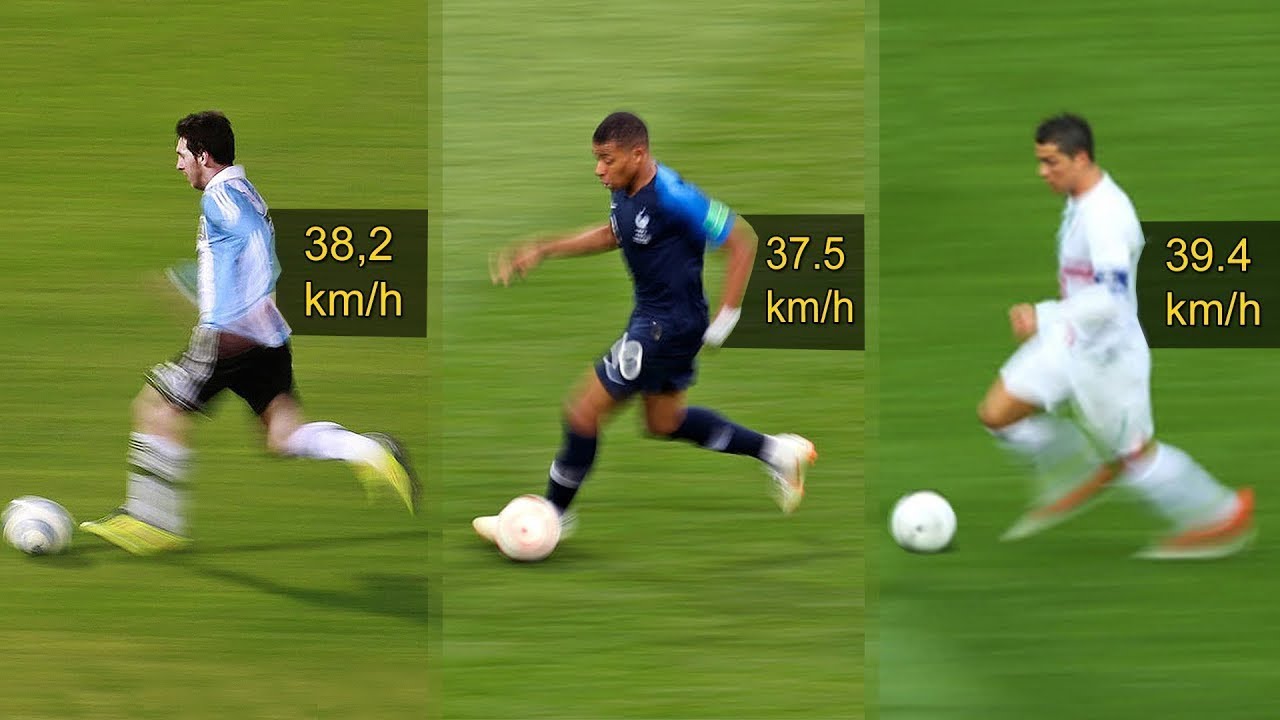SPEED IN SPORTS AND ATHLETIC PERFORMANCE

Introduction
It doesn’t take a rocket scientist to understand the importance of speed in any sport. With skill differences being as small as they are at the very top, your best bet is to outperform your competition by being faster than everyone else. It is the one athletic component that will consistently give you a benefit in every single sport that you set out to conquer. Simply put, the faster you are, the bigger your competitive edge is.
This article will tell you why speed is so crucial for athletic performance and development. However, if you are already itching to train and can’t be bothered by reading this theory section, go ahead and check out our programs.
What is speed in sports exactly?
Speed in sports is described as the ability to perform any sort of movement (such as a throw, a sprint, or a jump) in as short amount of time as possible. Therefore, speed is also heavily related to your power, or your ability to produce as much force as quickly as possible.
However, speed is used to illustrate the combination of your technical skill and power to accelerate to as high of a speed as possible and maintain it for an extended amount of time. In a way, you can think of it as a combination of reaction time, acceleration, maximum speed, and speed endurance. In fact, speed may even be one of the more underestimated fitness components in an athlete’s arsenal.
”Speed is a combination of reaction speed, acceleration, maximum speed and speed endurance”
Some sports scientists even consider speed as an important part of balance skills since quicker force production can help you regain your balance quicker. And since this occurs in nearly all sports that have quick changes in direction or physical contact, it is easy to see why you should put some time and effort to train it. In fact, speed training has also proven to prevent injuries because your body adjusts to maximal effort and learns to maintain proper muscle activation and joint alignment even during unexpected situations.
The simple fact is that speed is needed in every competitive sport out there. Whether it is quick side-to-side movements or just pure maximum speed, an improvement in your speed abilities will surely result in better success on the field.
Speed in sports can be divided into reaction time, acceleration, maximum speed and speed endurance
Speed can be divided into four different categories; reaction time, acceleration, maximum speed, and speed endurance. While all of these speed components have some similarities, such as working at a high intensity, they all rely on somewhat different physiological mechanisms. That’s why no single athlete is going to be the best at all of them.
Reaction time means how fast your sensory system (part of the nervous system that processes sensory information) can perceive, process, and respond to an external stimulus. These stimuli can be either visual (seeing), auditory (hearing), or kinaesthetic (touch). One of the most common examples of reaction time is the time it takes to start accelerating after a starting pistol.
Acceleration describes an increase in an object’s speed. In a sports context, this could mean how quickly an athlete can increase their velocity towards maximal speed or while throwing a javelin, etc. Acceleration also always has a magnitude and a direction which means you can produce force horizontally or vertically. For example, a basketball player can run up and down the court while also jumping upwards to get a better shot.
Maximum speed, = or top speed, demonstrates the highest velocity you can ultimately produce during a certain activity such as sprinting, cycling, rowing, or even cross-country skiing. Since reaching your top velocity requires 100% effort, it relies on your neuromuscular system’s (muscles and their connecting nerves) ability to recruit as many fast-twitch muscle fibers as quickly and efficiently as possible. However, bear in mind that it takes up to 5-6s to attain your highest muscle contraction, which means that most sports don’t have enough time to take full advantage of it.
Speed endurance, = also known as anaerobic endurance, refers to your body’s ability to sustain a higher intensity exercise for an extended amount of time. It relies strongly on your anaerobic (without oxygen)efficiency, which describes your ability to resist lactate build-up and fight against fatigue during high-intensity performance. 200m or 400m sprints are prime examples of sports that require a significant amount of speed endurance.
"Most speed skills need to be trained separately."
While speed is considered to be very dependent on genetics, the good news is that each of these speed skills can still be improved with a well-balanced routine. As far as training goes, they all require accelerating and explosive exercises that are performed at the right intensity. However, the real difference between training methods depends on which one you are trying to improve.